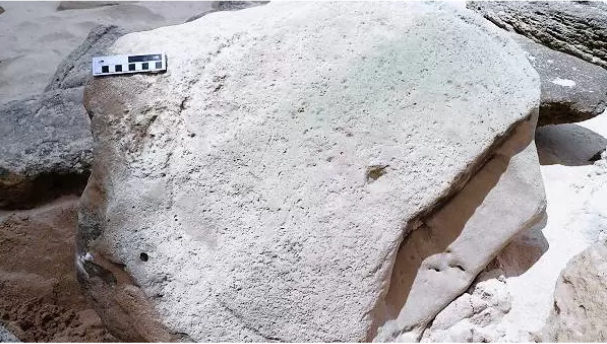New research found that that the activity of making sand images in the Cape South Coast can be dated back over 70 000 years ago. The findings suggest that the Western Cape is the Cradle of Human Culture.
Dr Charles Helm, a research associate at the African Centre for Coastal Palaeoscience at Nelson Mandela University, and his team of researchers found that the activity of making images in the sand might have its origins in the Cape South Coast, Western Cape. These can be dated back between 70 000 – 158 000 years ago.
This discovery suggests that humankind’s cognitive and creative abilities most likely first advanced in this area, making the Western Cape the Cradle of Human Culture.
The Cradle of Human Culture encircles a vast area focused on three sites – Diepkloof Rock Shelter on the Cape West Coast; Blombos Cave near Stilbaai; and Pinnacle Point near Mossel Bay. It details humanity’s earliest use of symbolism, art and technology, thus tracking the origins and development of human culture.
In a press release, Helm explained the rationale behind his teams research.
“We asked the following questions: in addition to recording the fossil footprints of ancient humans, could those ancient dune and beach surfaces have recorded other evidence of human activity, such as patterns, symbols, sculptures, or evidence of foraging? If so, could such ancient canvases of sand, now preserved as surfaces of coastal rocks, leave evidence that can be discerned and interpreted today? Indeed, could such evidence form a previously undocumented form of Middle Stone Age human expression and activity?”
The team investigated this theory by searching for a human ‘signature’ on rock surfaces which contained a multitude of lines, grooves, patterns and shapes.
They reported their findings in eight sites on the Cape South Coast: two in the Garden Route National Park, five in Goukamma Nature Reserve and one east of Still Bay. While some of their findings were equivocal, others were highly compelling. These include a near-perfect circle with a central depression that hinted at how it may have been created, a ‘hashtag’ (chevron) pattern that appeared similar to known abstract art in Blombos Cave, and an array of grooves clustered around a possible human footprint.
“We are proud of Dr Helm’s latest findings,” says Wesgro CEO, Tim Harris. “It provides further evidence that the development of modern human behaviour started in the Western Cape. This new discovery will form part of the Cradle of Human Culture which was launched earlier this year in conjunction with Department of Cultural Affairs and Sport, Department of Economic Development and Tourism and the Cradle of Humankind. Our province is rich with cultural heritage and history, this is just another reason why people should visit our province.”
“The new developments in research now affirms that the Cradle of Human Culture is not only an archaeological discovery, but is indeed a journey of human expression and humanity itself that showcases the behavioural development of Homo sapiens from as far back as 100 000 years ago,” says Western Cape Minister of Cultural Affairs and Sport, Anroux Marais.
Picture: Nelson Mandela University

